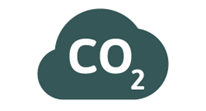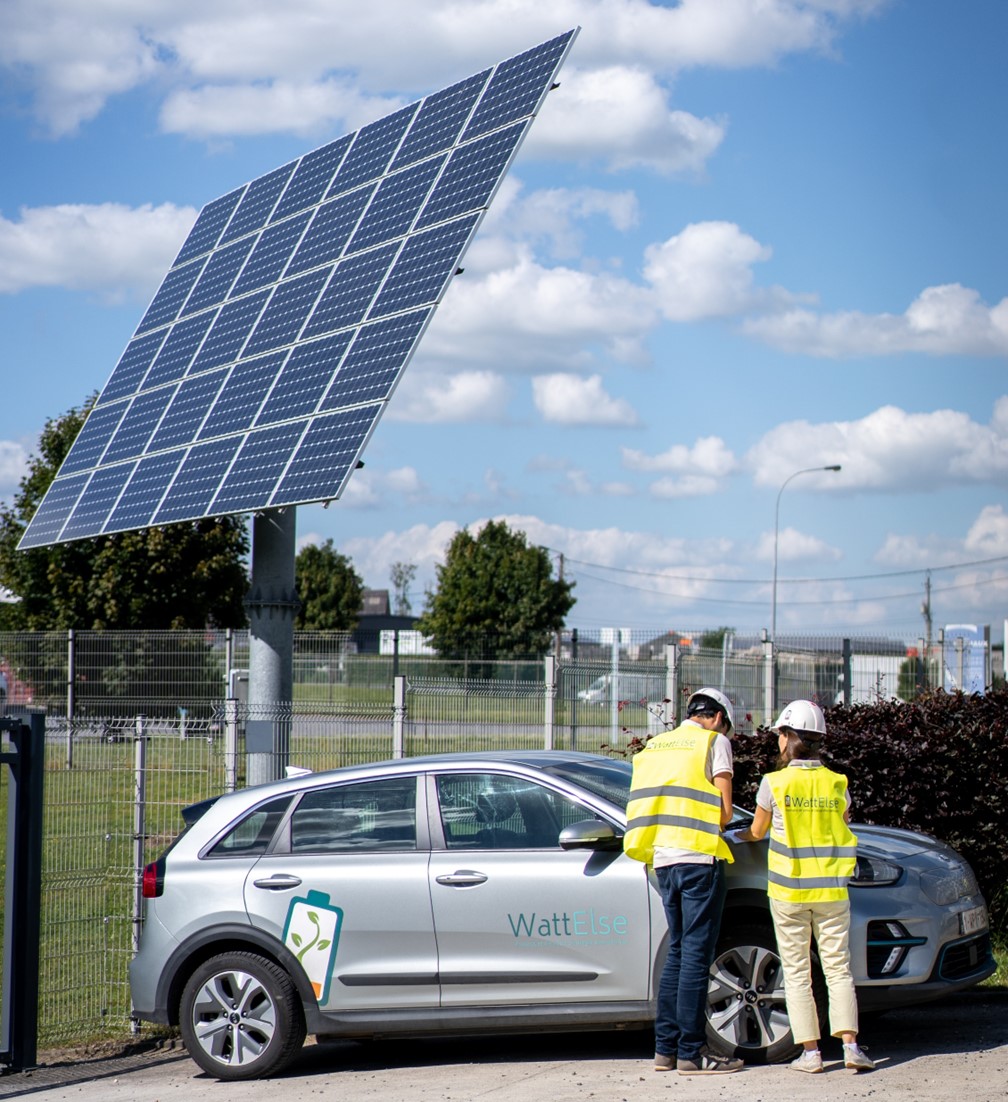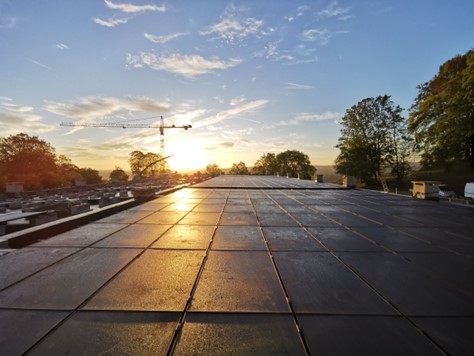Every year, the WattElse multidisciplinary team carries out numerous studies of photovoltaic installations for medium and large-scale projects for the public and private sectors.
These requests generally follow the rise in energy prices but are also often accompanied by several environmental questions. As these questions come up regularly, we wanted to answer them by the means this article.
Do PV panels produce more energy then needed to produce them?
Yes, even if the production of these is still quite carbonaceous. The panels are indeed produced using non-renewable energies: extraction of raw materials, manufacturing and transport still heavily dependent on fossil fuels.
Currently and according to Imeon Energy[1], the entire process, from manufacturing to recycling a photovoltaic module, is offset by the energy it will generate in 2 to 4 years of production (depending on the model). Compared to the 25 to 30-year lifespan of current panels, the energy required for their manufacture, transport and recycling is therefore compensated 10 times on average.

According to Soloréa[2], the low use of semiconductors, the use of recyclable materials, the replacement of certain metals and above all the improvement of technologies have a positive influence on the energy payback time. Second generation technologies such as thin layer silicon cells already record (as an indication) a reduction in the energy payback time of almost a year.
Are PV panels recyclable and recycled ?
Also yes. Indeed, the European D3E directive requires manufacturers of photovoltaic panels to pre-finance the collection and recycling of end-of-life products in the 28 European countries.
Photovoltaic panels are composed mainly of glass (80%) but also of aluminium, silicon or cadmium-based photovoltaic cells, plastic and copper and/or silver connections. According to the Ademe, more than 85% of the materials making up photovoltaic systems are recyclable and according to Total Energy[3], 90% of them are.
Recycling consists of two steps:
– Primary dismantling, which consists of separating the glass from other components such as the frame or the electrical cables;
– Secondary dismantling which separates the glass of silicon cells from other metals.
The glass is recycled as usual. The silicon, meanwhile, is either recovered to manufacture new photovoltaic cells or transformed into an ingot (it can be reused up to 4 times).

According to experts, recycling 1 tonne of PV panels saves +/- 1.2 tonnes of CO2 or the equivalent of the emissions of 350 small city cars. Since 2010, in Europe, nearly 6,000 tons of CO2 have been saved thanks to the recycling of photovoltaic panels without taking into account the CO2 emissions saved during the life of the installation.
Do I have to pay for the recycling of my panels ?
As indicated above, the activity is regulated by a European directive dating from July 1, 2016. This requires installers to collect and recycle used photovoltaic panels free of charge.
In addition to this obligation, this directive called for the establishment of an eco-contribution. In Flanders and since 2017, it amounts to €2 excl. VAT/panel. In Wallonia and Brussels, it is not yet in force. For panels installed before 2016, you do not have to pay recycling premiums.
Do all photovoltaic panels come from China and which ones to choose ?
On the market, China is the leader[4] because of its unbeatable prices (about 30% cheaper). Although Chinese panels are not expensive, their price only represents a quarter of the overall cost of a PV installation, which includes installation, connection and other materials…
Some Chinese photovoltaic solar panels are very competitive and efficient. However, to limit problems of safety, sealing or low performance, it is better to choose certified and European companies. In addition, you will support a more local sector in the face of strong Chinese competition.
What is the difference between photovoltaic panels and solar thermal panels ?
It is important to distinguish photovoltaic panels which produce electricity from thermal solar panels which allow to produce heat (in the form of hot water).
What is the role of WattElse in this type of project ?
Our experts can:
– analyse your consumption in order to offer you a realistic and global view of your energy footprint;
– size the installation according to your needs;
– select the site where to install the panels;
– give indications and advice concerning your installation;
– carry out a comparative analysis of the quotes you receive and advise you completely independently on the best choice to make;
– help you in monitoring the site.
Am I entitled to subsidies/help/green certificates for the installation and use of my panels ?
Since WattElse is UREBA approved, you can benefit from financial aid for conducting the (pre)feasibility study of your installation.
Companies that invest in a PV installation can, under certain circumstances, deduct the expense from their net taxable income. Since January 1st 2020, the deduction rate is 13.5% in the context of investments to save energy.
The system of green certificates is different in Brussels, Wallonia and Flanders. In Wallonia, only installations of more than 10kVa (therefore non-prosumer) can receive green certificates. In Brussels, 3 green certificates per MWh produced are issued for installations of 5 kWp or less, and 2.4 green certificates per MWh produced for installations of more than 5 kWp or integrated in the factory into building elements. In Flanders, installations of more than 10 kW continue to be awarded green certificates.
Other local support may exist: some cities grant bonuses for the installation of panels. It is therefore advisable to always check beforehand.
[1] Qu’est-ce que l’énergie grise d’un module photovoltaïque ? (imeon-energy.com), consulted on May 5th 2022
[2] Le bilan énergétique du photovoltaique – L’énergie grise de l’énergie solaire (solorea.com), consulted on May 5th 2022
[3] Le recyclage des panneaux photovoltaïques en Belgique (totalenergies.be), consulted on May 5th 2022
[4] In 2012, 80% of PV panels installed in Europe originated from China.



